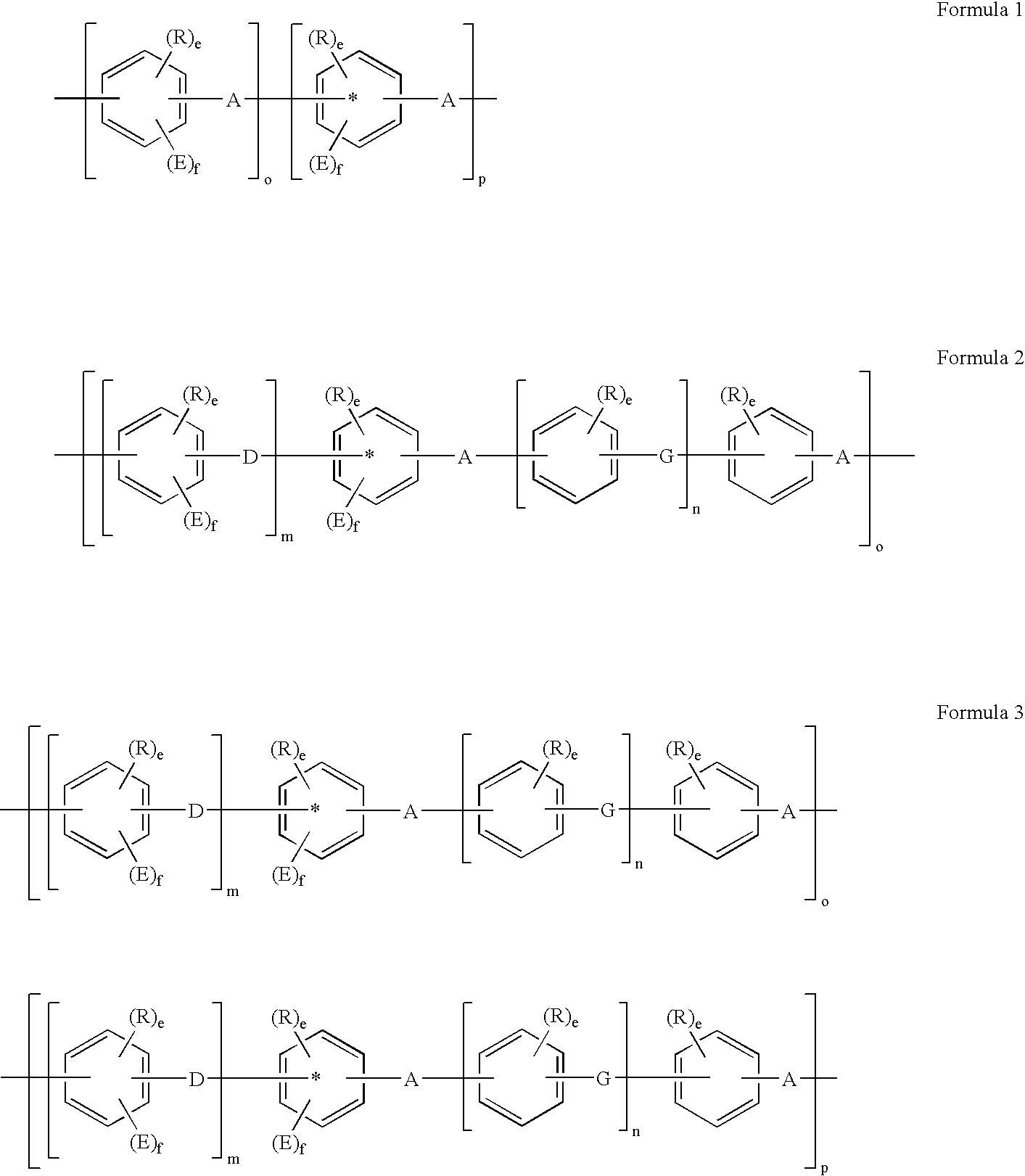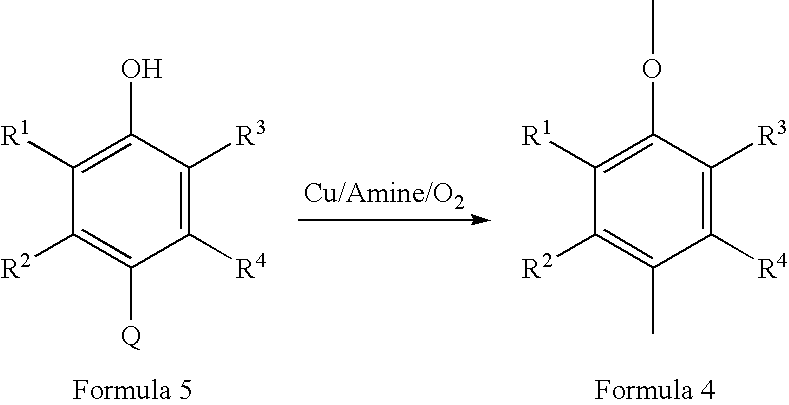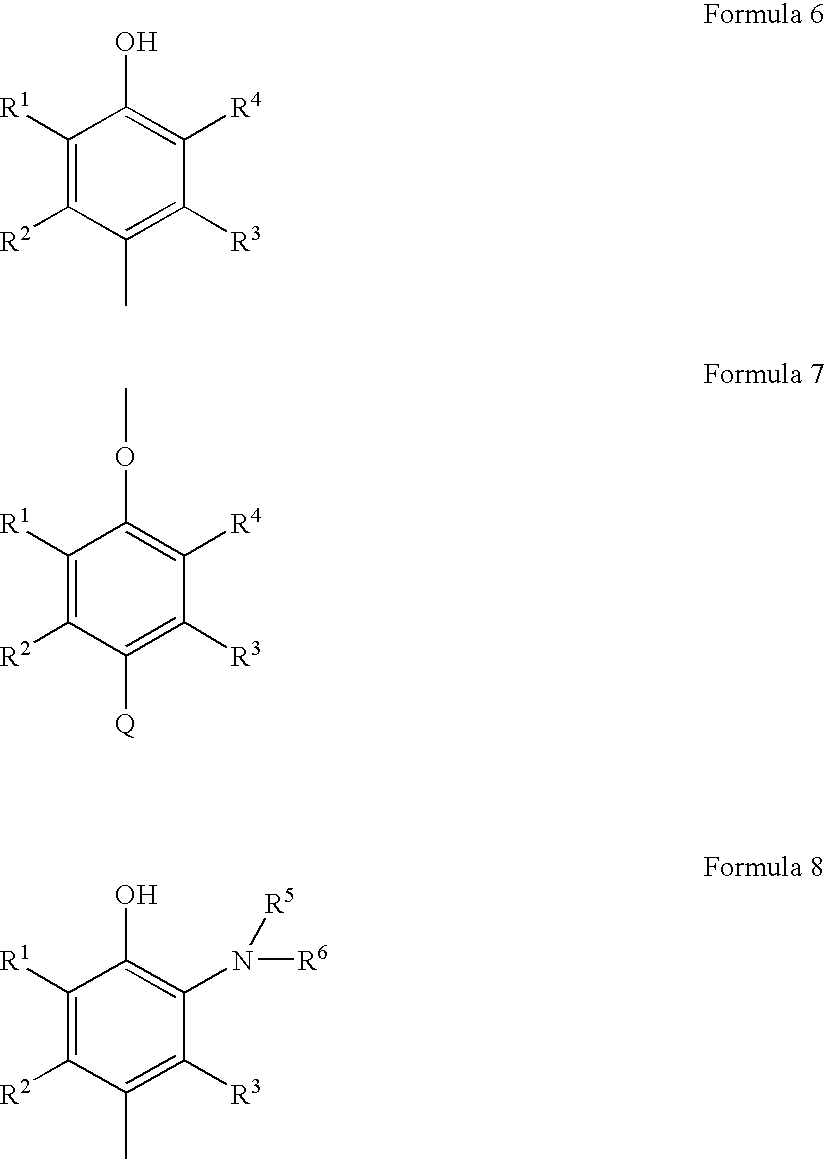Method of making and using membrane
a technology of porous membrane and membrane layer, which is applied in the field of making and/or using membrane layer and system, can solve the problems of negative impact on the flux and selectivity of porous membrane layer, and achieve the effect of high hydrophilicity
- Summary
- Abstract
- Description
- Claims
- Application Information
AI Technical Summary
Problems solved by technology
Method used
Image
Examples
example 1
Preparation of Tri-n-butyltinhydride Reduced Poly (2,6-dimethyl-1,4-phenylene Ether)
[0117]A 12 liter three-neck round-bottom flask equipped with a mechanical stirrer, thermometer and a reflux condenser with a nitrogen bypass is charged with 6 liters of phenyl ether and 100 ml of tri-n-butyltinhydride. Under vigorous stirring conditions 1200 grams (g) of polyphenylene ether (viscosity (η=0.551 deciliter per gram (dl / g), Mn=21,600 gram per mole (g / mol), Mw=61600 gram per mol (g / mol), percent N=0.1225, percent OH=0.0713) is added. The reaction mixture is heated to 200-210 degrees Celsius and maintained at that temperature for 5 hours. A fine grey precipitate forms. The solution is cooled and 3 liter of chloroform is added to facilitate filtration. The polymer solution is filtered three times through CELITE 270, with additional chloroform being added to facilitate filtration. The filtrate is then precipitated into methanol and washed repeatedly with methanol and acetone and dried in vac...
example 2
Preparation of benzoate-capped, tri-n-butyltinhydride Reduced poly (2,6-dimethyl-1,4-phenylene Ether)
[0118]A 5-liter three-neck round-bottom flask equipped with a mechanical stirrer, thermometer and a reflux condenser with a nitrogen bypass is charged with 3 liters of toluene and 600 grams (g) of the polyphenylene ether from Example 1. With vigorous stirring, 140.6 g of benzoyl chloride and 111.1 g of N,N′-dimethylbutylamine is added. The reaction mixture is heated to 100 degrees Celsius and maintained at that temperature for 12 hours. The solution precipitates into methanol and is dried in vacuo. The product dissolves in chloroform and is precipitated again into methanol. The product is dried in vacuo. 1H- and 13C-NMR analysis are consistent with the expected product (viscosity (η=0.553 deciliter per gram (dl / g), Mn=32,700, Mw=63,700, percentN=0.0332, percentOH=0.0185). Reduction in the hydroxyl content is consistent with end-capping of the terminal groups.
example 3
Preparation of methyl-brominated tri-n-butyltinhydride Reduced poly(2,6-dimethyl-1,4-phenylene Ether)
[0119]To 500 milliliter (ml) of carbon tetrachloride 100 grams (330 millimole repeat unit) of polyphenylene ether from Example 2 is added. After the polyphenylene ether had dissolved, 58.75 grams (132 millimole, 40 mol percent of PPO repeat units) N-bromosuccinimide is added. The solution is heated to reflux for 4 hours. After such time the solution is cooled and the polymer precipitates into methanol. The product is isolated by filtration and dried in vacuo. Mn=31,130 gram per mole (g / mol), Mw=34,400 gram per mole (g / mol), percent methyl groups brominated=35.
PUM
| Property | Measurement | Unit |
|---|---|---|
| molecular weight distribution | aaaaa | aaaaa |
| temperature | aaaaa | aaaaa |
| temperature | aaaaa | aaaaa |
Abstract
Description
Claims
Application Information
 Login to View More
Login to View More - R&D
- Intellectual Property
- Life Sciences
- Materials
- Tech Scout
- Unparalleled Data Quality
- Higher Quality Content
- 60% Fewer Hallucinations
Browse by: Latest US Patents, China's latest patents, Technical Efficacy Thesaurus, Application Domain, Technology Topic, Popular Technical Reports.
© 2025 PatSnap. All rights reserved.Legal|Privacy policy|Modern Slavery Act Transparency Statement|Sitemap|About US| Contact US: help@patsnap.com



